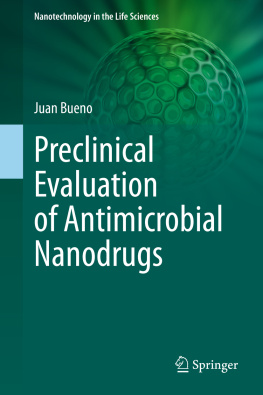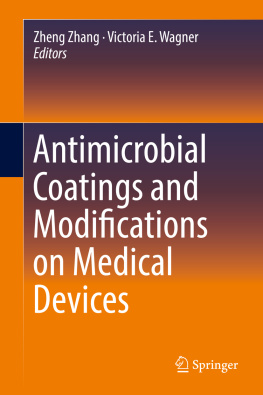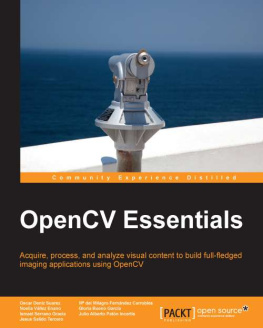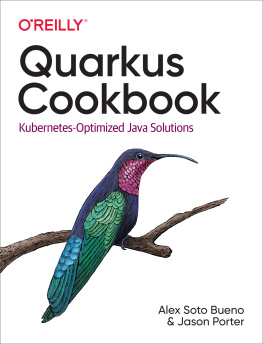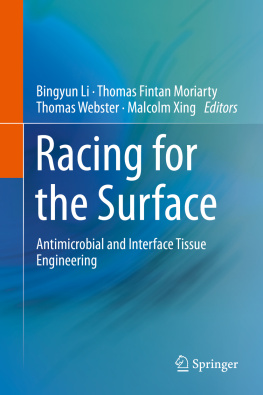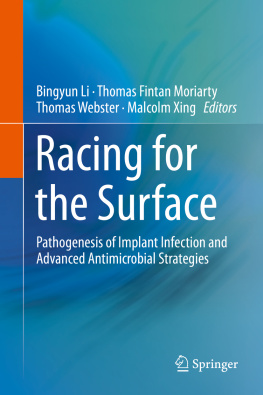Juan Bueno - Preclinical Evaluation of Antimicrobial Nanodrugs
Here you can read online Juan Bueno - Preclinical Evaluation of Antimicrobial Nanodrugs full text of the book (entire story) in english for free. Download pdf and epub, get meaning, cover and reviews about this ebook. year: 2020, publisher: Springer International Publishing, genre: Romance novel. Description of the work, (preface) as well as reviews are available. Best literature library LitArk.com created for fans of good reading and offers a wide selection of genres:
Romance novel
Science fiction
Adventure
Detective
Science
History
Home and family
Prose
Art
Politics
Computer
Non-fiction
Religion
Business
Children
Humor
Choose a favorite category and find really read worthwhile books. Enjoy immersion in the world of imagination, feel the emotions of the characters or learn something new for yourself, make an fascinating discovery.
- Book:Preclinical Evaluation of Antimicrobial Nanodrugs
- Author:
- Publisher:Springer International Publishing
- Genre:
- Year:2020
- Rating:4 / 5
- Favourites:Add to favourites
- Your mark:
- 80
- 1
- 2
- 3
- 4
- 5
Preclinical Evaluation of Antimicrobial Nanodrugs: summary, description and annotation
We offer to read an annotation, description, summary or preface (depends on what the author of the book "Preclinical Evaluation of Antimicrobial Nanodrugs" wrote himself). If you haven't found the necessary information about the book — write in the comments, we will try to find it.
Juan Bueno: author's other books
Who wrote Preclinical Evaluation of Antimicrobial Nanodrugs? Find out the surname, the name of the author of the book and a list of all author's works by series.
Preclinical Evaluation of Antimicrobial Nanodrugs — read online for free the complete book (whole text) full work
Below is the text of the book, divided by pages. System saving the place of the last page read, allows you to conveniently read the book "Preclinical Evaluation of Antimicrobial Nanodrugs" online for free, without having to search again every time where you left off. Put a bookmark, and you can go to the page where you finished reading at any time.
Font size:
Interval:
Bookmark:
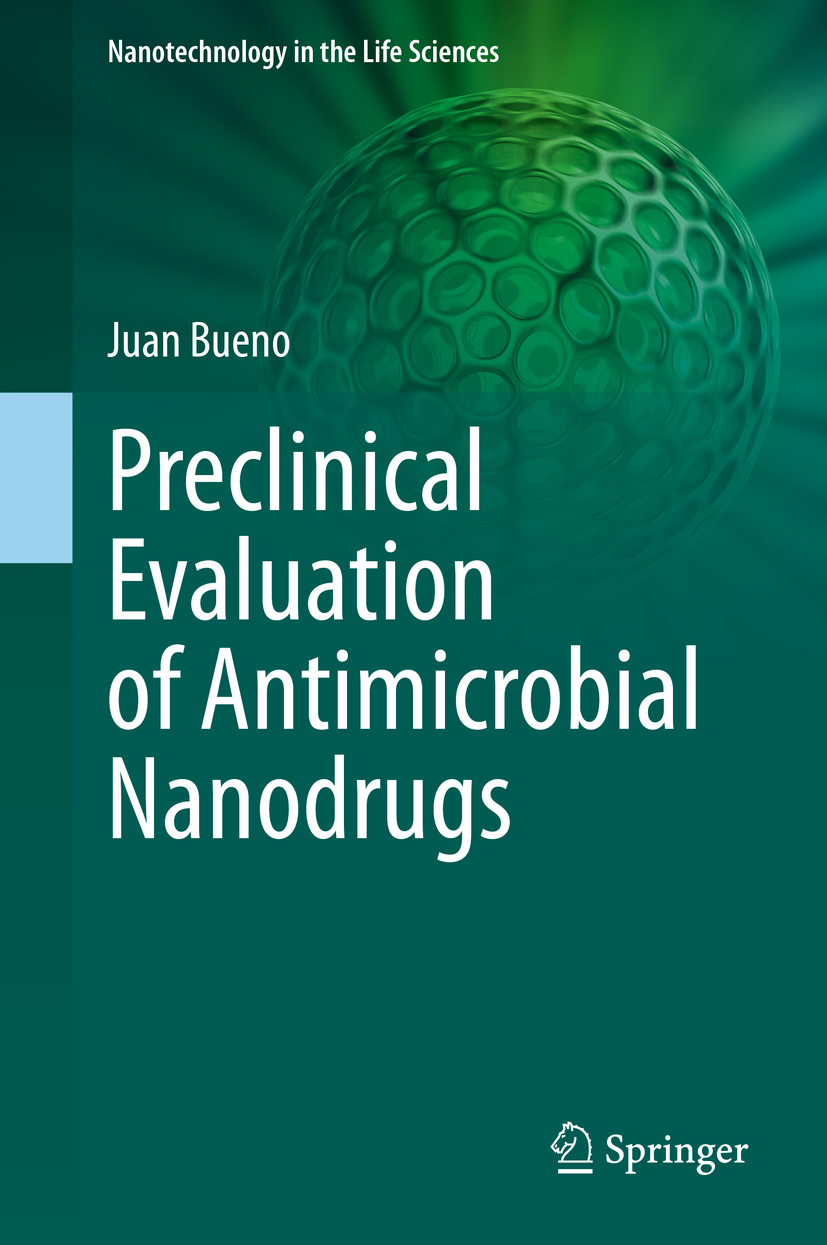
Nano and biotechnology are two of the 21st centurys most promising technologies. Nanotechnology is demarcated as the design, development, and application of materials and devices whose least functional make up is on a nanometer scale (1 to 100 nm). Meanwhile, biotechnology deals with metabolic and other physiological developments of biological subjects including microorganisms. These microbial processes have opened up new opportunities to explore novel applications, for example, the biosynthesis of metal nanomaterials, with the implication that these two technologies (i.e., thus nanobiotechnology) can play a vital role in developing and executing many valuable tools in the study of life. Nanotechnology is very diverse, ranging from extensions of conventional device physics to completely new approaches based upon molecular self-assembly, from developing new materials with dimensions on the nanoscale, to investigating whether we can directly control matters on/in the atomic scale level. This idea entails its application to diverse fields of science such as plant biology, organic chemistry, agriculture, the food industry, and more.
Nanobiotechnology offers a wide range of uses in medicine, agriculture, and the environment. Many diseases that do not have cures today may be cured by nanotechnology in the future. Use of nanotechnology in medical therapeutics needs adequate evaluation of its risk and safety factors. Scientists who are against the use of nanotechnology also agree that advancement in nanotechnology should continue because this field promises great benefits, but testing should be carried out to ensure its safety in people. It is possible that nanomedicine in the future will play a crucial role in the treatment of human and plant diseases, and also in the enhancement of normal human physiology and plant systems, respectively. If everything proceeds as expected, nanobiotechnology will, one day, become an inevitable part of our everyday life and will help save many lives.
More information about this series at http://www.springer.com/series/15921

This Springer imprint is published by the registered company Springer Nature Switzerland AG
The registered company address is: Gewerbestrasse 11, 6330 Cham, Switzerland
Dedicated to
Martha Ritor for her full support and management for the realization of this book
Sebastian Ritor for his constant work to improve on the road that awaits us
ITC Ritor for her eternal and unconditional company during the writing of this manuscript
Here we stand, bound forevermore
Were out of this world, until the end
Here we are, mighty, glorious
At The End Of The Rainbow
With gold in our hands
Andreas Mueck/Joacim Anders Cans, Martin Albrecht-Lindow
End of the Rainbow by Hammerfall, Legacy of Kings
Anti-infectives should have the highest possible affinity for the target microorganism.
They should have pharmacokinetic and pharmacodynamic parameters capable of being adapted to the pharmacogenetic aspects of the patient in a personalized medicine model.
They should comply with Lipinskis rules of five to a greater degree.
In this way, modern antimicrobials should not alter the host microbiome and not generate the phenomenon of dysbiosis .
To a greater extent, symbiotic anti-infective therapy should seek to restore equilibrium interaction between the host and its symbiont s as part of the healing process.
Finally, the possible toxicities and adverse reactions must be clearly determined in order to administer the new medications safely and adequately.
Thus, the promise of nanotechnology to initiate a pharmacological revolution requires the redesign of innovative preclinical evaluation models that take into account new approaches beyond the terms microbicide and microbiostatics such as antibiotic adjuvants, the inhibition of virulence mechanisms and of quorum-sensing system signals, and the antibiofilm activity, as well as preventing adhesion and colonization in the case of nanosurfaces in hospital spaces and on medical equipment. In the same way, it is necessary to establish the correct parameters of nanotoxicity that allow scientists to evaluate the safety and lethal dose of nanomaterials in patients and the environment.
Font size:
Interval:
Bookmark:
Similar books «Preclinical Evaluation of Antimicrobial Nanodrugs»
Look at similar books to Preclinical Evaluation of Antimicrobial Nanodrugs. We have selected literature similar in name and meaning in the hope of providing readers with more options to find new, interesting, not yet read works.
Discussion, reviews of the book Preclinical Evaluation of Antimicrobial Nanodrugs and just readers' own opinions. Leave your comments, write what you think about the work, its meaning or the main characters. Specify what exactly you liked and what you didn't like, and why you think so.

